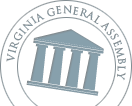Virginia's Community Colleges and the Changing Higher Education Landscape

WHY WE DID THIS STUDY
In 2024, the Joint Legislative Audit and Review Commission (JLARC) directed staff to review how well the state’s community colleges are adapting to the changing higher education landscape.
ABOUT VIRGINIA'S COMMUNITY COLLEGES
Virginia’s Community College System consists of 23 individual colleges, a system office, and a board. More than 235,000 students were enrolled at some point during the 2024–25 academic year. Enrollment has declined over the last 10 years but stabilized and rebounded over the last three years, largely because of the growing number of dual enrollment students.
WHAT WE FOUND
Proportion of students taking courses online has increased substantially
Students’ expectations about course delivery have changed, with students increasingly desiring online and on-demand (i.e., asynchronous) courses. In response, Virginia community colleges are embracing online education. The proportion of students taking all their courses online increased from 17 percent in 2015–16 to 41 percent in 2024–25. At the same time, the proportion of students taking all their courses in-person has declined from 39 percent to 11 percent. A substantial portion of students take a mix of in-person and online courses, and that proportion has grown slightly (4 percentage points) over the last decade (figure).
The shift to online learning has occurred with both asynchronous and synchronous courses. In 2024–25, 63 percent of Virginia Community College System (VCCS) students were taking at least one course asynchronously, a 22 percentage point increase over the past decade. Just 1 percent of VCCS students took any synchronous courses in 2015–16, but 25 percent of VCCS students did so in 2024–25.
Larger proportion of students taking all classes online

Students taking, and retaking, asynchronous courses are less successful, but the difference is somewhat small
Several different analyses indicate students are less successful when they take an asynchronous course, though the differences are not substantial. VCCS students taking asynchronous courses have lower success rates compared with in-person and synchronous peers (when comparing success across all credit courses offered). Students passed their asynchronous courses 73 percent of the time in 2024–25. This was 3 percentage points less than those students taking in-person courses (76 percent), 5 percentage points less than for synchronous online courses (78 percent), and 6 percentage points less than for hybrid courses (79 percent). The difference was larger for certain gateway courses. For example, success rates were 6 percentage points lower for students taking History 101 asynchronously than students taking the courses in-person; the difference was 10 percentage points for Communications 100, a public speaking course many students take early in their academic career.
Students were also less successful when they retook a course asynchronously, but the difference was also not substantial. In fall 2024, of the more than 7,000 students who retook a course asynchronously after previously failing or withdrawing, 42 percent were unsuccessful. This was 6 percentage points worse than students who retook a course in-person (36 percent).
VCCS plans to continue to expand the use of online courses in the next few years and specifically to increase the use of asynchronous courses. While the expansion of asynchronous online courses increases access and flexibility, VCCS and the colleges need to be sure that they strike the appropriate balance between the proportion of courses offered online and in-person going forward. Access and flexibility should not necessarily always be the highest priority, especially when students are less successful.
State’s FastForward program has grown substantially, but demand this year will be higher than available funding
One of the major changes to the higher education landscape has been growing interest in short-term, skill-based credentials. This change is reflected in the growing proportion of CTE students enrolling in short-term FastForward courses. Between FY18 and FY25, the proportion of CTE students in FastForward courses has more than doubled (from 13 to 27 percent).
Funding for the program has increased but has not been able to keep up with recent program demand. Appropriations have grown from $5 million in FY17 to $24 million in FY26. Despite these increases, VCCS staff expect demand for the program to outpace available funding. VCCS indicates it will likely reduce or prioritize program offerings in the spring 2026 academic semester to stay within the budgeted amount of FastForward funding.
In terms of wage gains, students who complete the program and obtain a credential make about $10,800 more annually than before the program (12 months after completion). The program’s success in meeting its goal to help participants earn a household sustaining wage is mixed. The median wage for FastForward participants 12 months after receiving their credential was approximately $41,000, which is above a living wage threshold for a Virginia household with one adult ($34,200). More than half of FastForward completers, though, report having one or more dependents, and the $41,000 average is below a living wage threshold for a Virginia household with one adult and one child ($48,800).
Dual enrollment has been growing, but about a third of high school graduates participate and a very small proportion earn credential
Dual enrollment students have been the fastest growing segment of VCCS’s enrollment. Between 2015–16 and 2024–25, dual enrollment grew 55 percent (from 37,400 students to 58,100). Dual enrollment students now comprise about one quarter of total VCCS enrollment.
Despite this growth, only about one-third of high school graduates took any dual enrollment courses during their high school career, and a very small proportion earn a credential through dual enrollment (table).
CCRV implementation is underway, but additional effort and realistic planning is needed
The 2024 General Assembly created the College and Career Ready Virginia (CCRV) program, which prohibits colleges from charging high school students who take certain dual enrollment courses and expands course availability. VCCS has directed colleges to stop charging students as of fall 2025 and required all school divisions to provide courses that would allow students to complete UCGS or Passport.
To meet CCRV requirements, colleges are working with school divisions to ensure that every qualified student has a pathway to complete UCGS or Passport, but this will require online courses in many divisions that do not have resources to offer all courses in high schools. CCRV allows VCCS to offer these courses virtually. However, stakeholders have cautioned that online learning may not be appropriate for all high school students who are taking accelerated classes. Given this concern, CCRV requires VCCS and VDOE to develop a plan to collect and report state-level and division-level outcome data.
A substantial difference between student eligibility and student interest makes it challenging to plan for additional dual enrollment capacity needed to meet future demand. If all eligible high school students participated in dual enrollment, the number of eligible dual enrollment students would increase by between 75 and 115 percent. However, there are several factors that may limit further growth in dual enrollment, including a lack of preparation and academic performance needed to take advanced coursework, alternative advanced course options (such as AP courses), and a shortage of dual enrollment teachers.
While there is substantial interest in expanding participation in dual enrollment, VCCS and other stakeholders need to be realistic about the factors that could potentially limit its growth. Otherwise, there is a risk of expending resources to build unneeded capacity, which will impose an unnecessary burden and workload on school divisions, taking time and resources away from other priorities.
Changing landscape warrants at least considering a more regionalized approach to improve efficiency
VCCS already has some characteristics of a regionalized system. For example, Northern Virginia Community College, with its six campuses in four localities serves the most students in the state and is the second most efficient in the state based on spending per student. In contrast, the smaller community colleges and those in regions with more colleges are significantly less efficient, spending significantly more per student (figure).
Larger colleges and regions with fewer colleges spend less per student

Inefficiencies are evident in class sizes and space utilization. Many smaller colleges with declining enrollment have a considerable number of classes with fewer than 10 students (sidebar). Moreover, as colleges increasingly provide education via virtual platforms, they have more unused classroom space. Five small colleges offer over half of their courses asynchronously online, resulting in 40 percent or less of available classroom space being used.
With changing trends in enrollment and course delivery, VCCS needs to fully consider opportunities to improve efficiency in fulfilling its mission. Some other states have sought greater system efficiency through mergers and other regionalization initiatives. While mergers or consolidation of colleges may not be called for, there are less drastic regionalization opportunities that could help to achieve greater efficiency.
WHAT WE RECOMMEND
Executive action
- Require students retaking a course asynchronously to meet with an advisor or faculty member to discuss strategies to help ensure success.
- Periodically evaluate the appropriate balance between asynchronous, hybrid, and in-person courses, and establish policies to minimize worse outcomes for online students.
- Further evaluate the FastForward program’s impact on participant employment, credential type and attainment, and longer-term wage gains.
- Initiate a strategic review and propose a plan for how the system can more efficiently deliver services, especially in regions with smaller colleges.
The full list of recommendations is available here.

